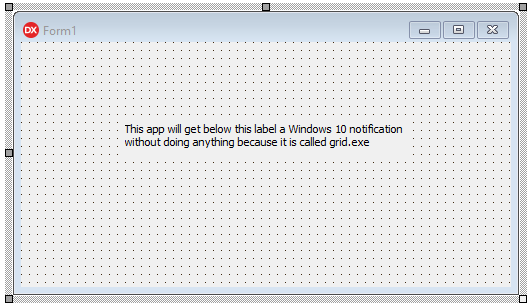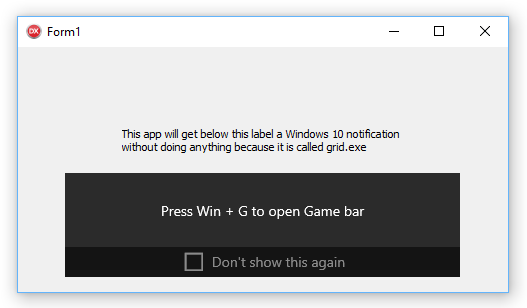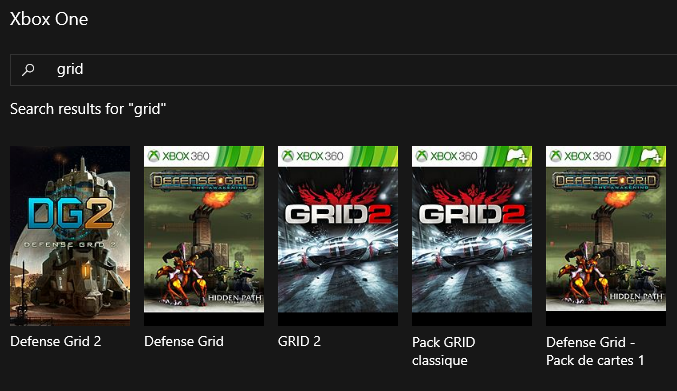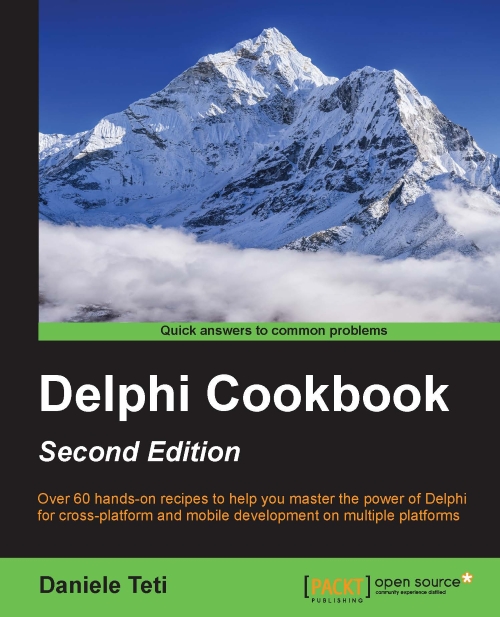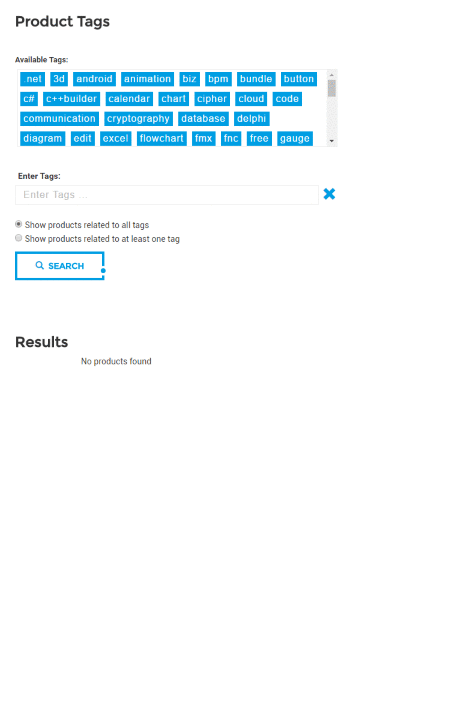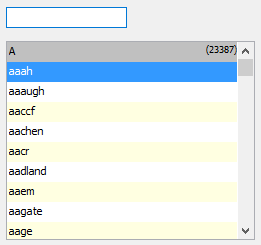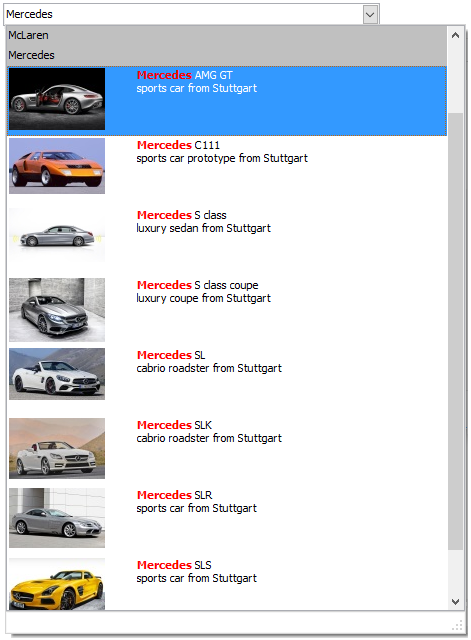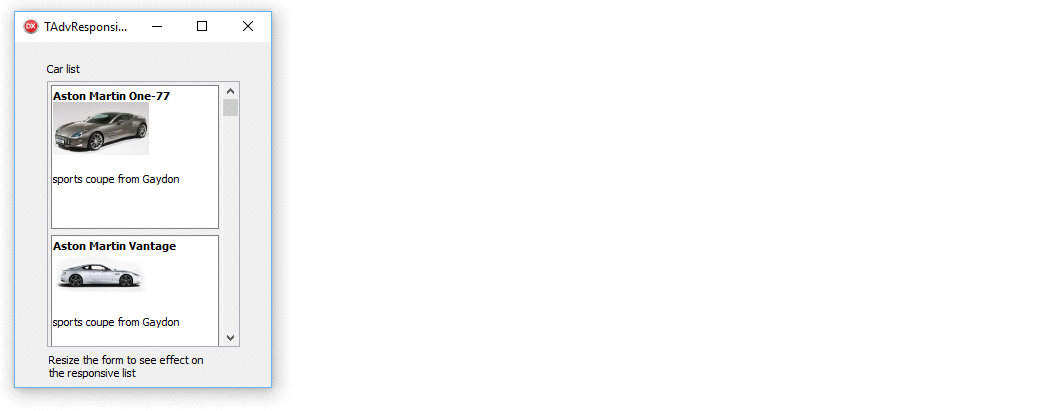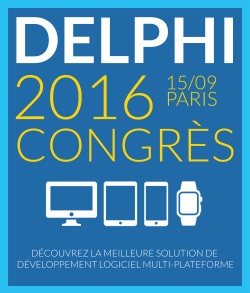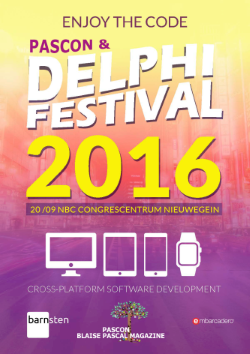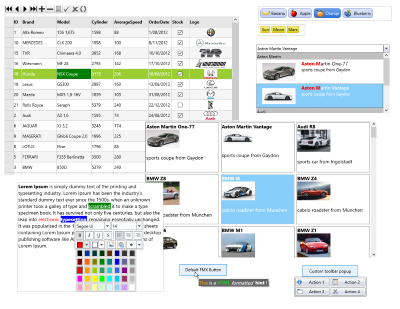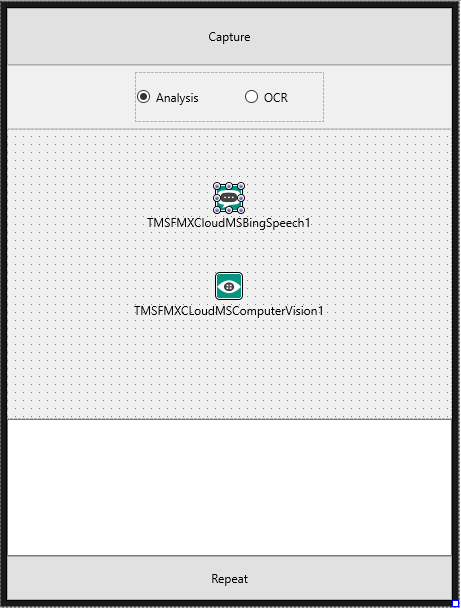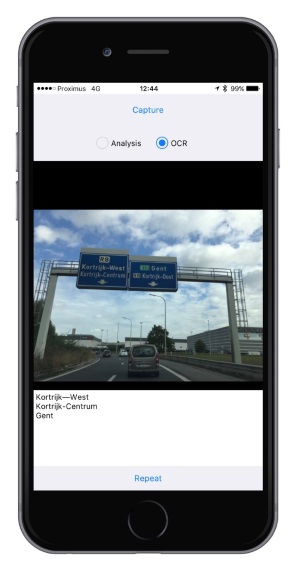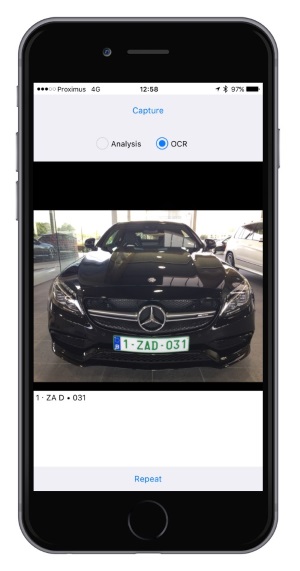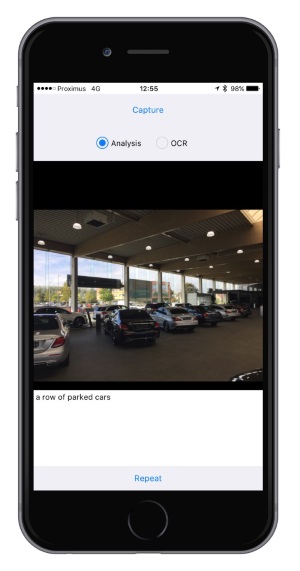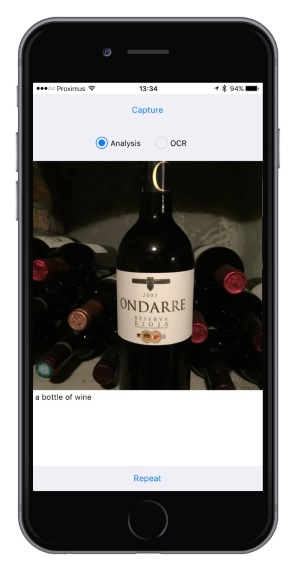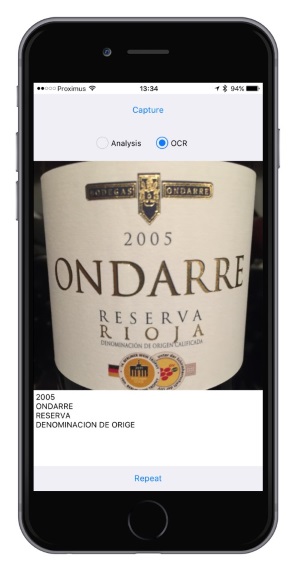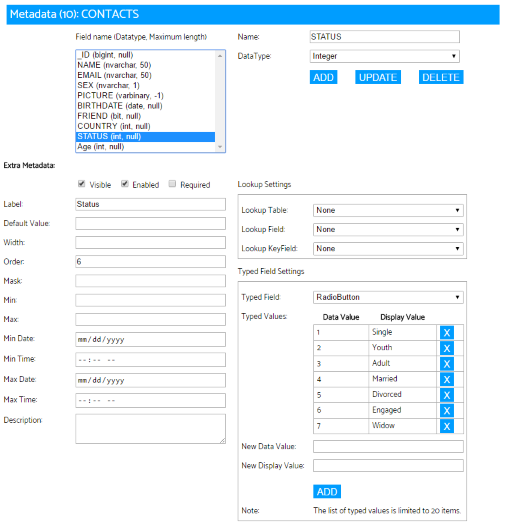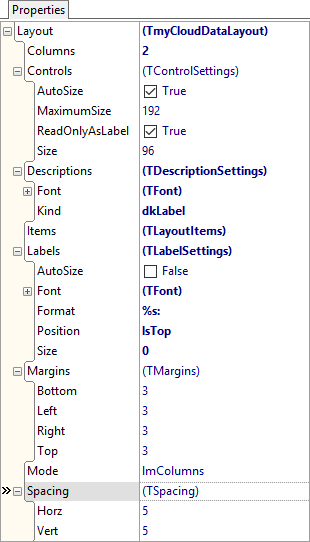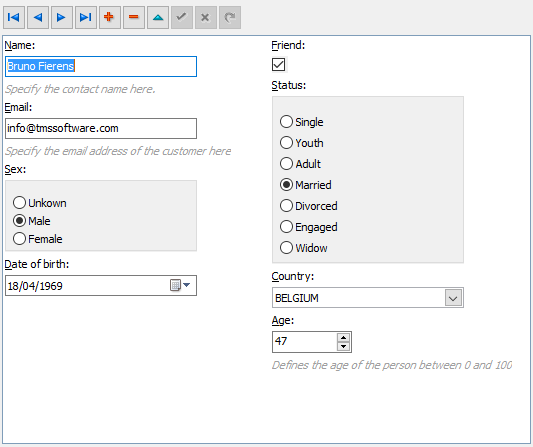It's almost three months since we released the first version of the TMS FNC UI Pack, a set of Framework Neutral Components (FNC), and have meanwhile released 2 major updates which include the TTMSFNCTabSet/TTMSFNCPageControl (v1.1), the recently introduced TTMSFNCListBox/TTMSFNCCheckedListBox and significant improvements / new features to the TTMSFNCTreeView such as filtering, sorting, keyboard lookup, clipboard support, ... (v1.2).
As already explained in previous blog posts (http://www.tmssoftware.com/site/blog.asp?post=335 and http://tmssoftware.com/site/blog.asp?post=346), the TMS FNC UI Pack is a set of UI controls that can be used from VCL Windows applications, FireMonkey (FMX) Windows, Mac OS-X, iOS, Android applications and LCL framework based Lazarus applications for Windows, Linux, Mac OS-X, ... . The TMS FNC UI Pack contains highly complex & feature-rich components such as grid, planner, rich editor, treeview, toolbars. So, with a single set of controls, you have the freedom of choice to use Delphi, C++Builder or the free Lazarus to create applications for a myriad of operating systems, you have a single learning curve to these components and as demonstrated here, you can use a single source to create apps for multiple targets.
This blog post will cover the TTMSFNCCheckedListBox, which is one of the new components that are added in the latest release (v1.2) of the TMS FNC UI Pack, show how to use myCloudData.net to store data and demonstrate how easy it is to switch between FMX, VCL and LCL with one shared source code. myCloudData is an easy to use & flexible service to make use of structured storage in the cloud from Windows, web, mobile or IoT apps and is offered by tmssoftware.com. myCloudData is OAUTH/JSON REST based and our TMS Cloud Pack includes a component to access the service and thus your data seamlessly.
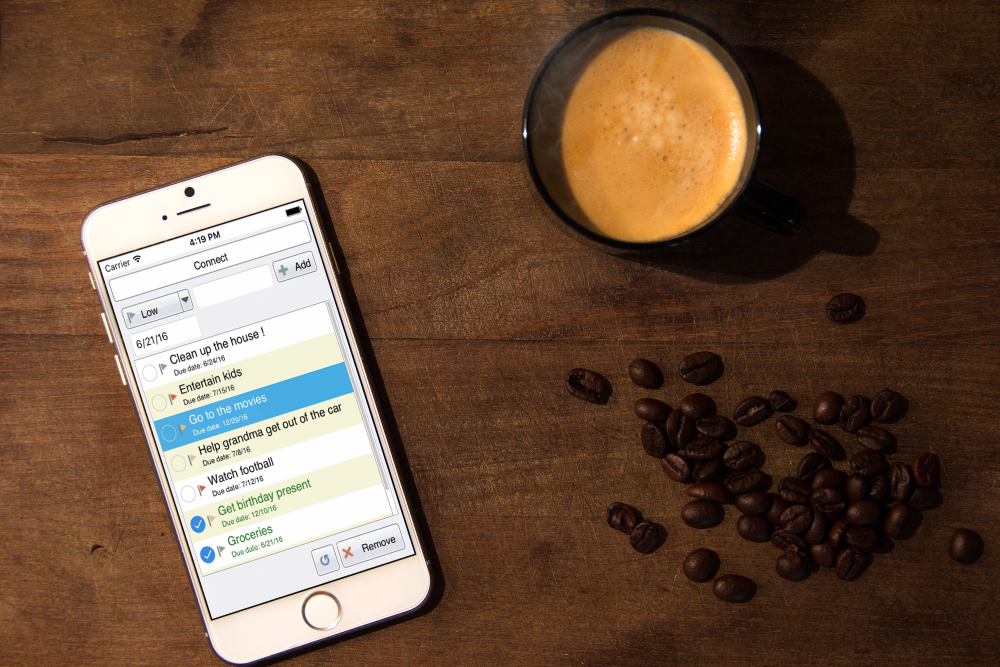
A single shared source
As with our TV-guide sample we have created a single shared source file that is used in a FMX, VCL and LCL project. The unit starts by defining the business logic class that will be instantiated in our application main form unit.
TTODOListLogic = class
private
FTable: TMyCloudDataTable;
FListBox: TTMSFNCCheckedListBox;
FMyCloudDataAccess: TMyCloudDataAccess;
FOnConnected: TNotifyEvent;
FBitmapContainer: TTMSFNCBitmapContainer;
protected
procedure DoConnected(Sender: TObject);
public
destructor Destroy; override;
procedure InitListBox(AListBox: TTMSFNCCheckedListBox);
procedure InitMyCloudData;
procedure Refresh;
procedure InitializeTable;
procedure AddNewItem(AText: string; ADate: TDateTime; APriority: TPriority);
procedure DeleteItem;
procedure Connect;
procedure DoBeforeDrawItem(Sender: TObject; AGraphics: TTMSFNCGraphics; ARect: TRectF; AItem: TTMSFNCListBoxItem; var AAllow: Boolean; var ADefaultDraw: Boolean);
procedure DoItemCheckChanged(Sender: TObject; AItem: TTMSFNCCheckedListBoxItem);
procedure DoItemCompare(Sender: TObject; Item1, Item2: TTMSFNCListBoxItem; var ACompareResult: Integer);
property OnConnected: TNotifyEvent read FOnConnected write FOnConnected;
property BitmapContainer: TTMSFNCBitmapContainer read FBitmapContainer write FBitmapContainer;
end;
Each framework has its own set of units in order to compile succesfully. We use the conditional defines added to our project to make the difference between each framework.
uses
Classes, SysUtils, DB
{$IFDEF VCL}
,VCL.TMSFNCListBox, VCL.TMSFNCCheckedListBox, CloudMyCloudData, CloudBase, VCL.TMSFNCUtils,
CloudCustomMyCloudData, VCL.TMSFNCGraphics, VCL.Dialogs, VCL.TMSFNCTypes, Types, VCL.TMSFNCBitmapContainer;
{$ENDIF}
{$IFDEF FMX}
,FMX.TMSFNCListBox, FMX.TMSFNCCheckedListBox, FMX.TMSCloudMyCloudData, FMX.TMSCloudBase,
FMX.TMSFNCUtils, FMX.TMSCloudCustomMyCloudData, FMX.TMSFNCGraphics, FMX.TMSFNCTypes, FMX.Dialogs, Types, FMX.TMSFNCBitmapContainer;
{$ENDIF}
{$IFDEF LCL}
,LCLTMSFNCListBox, LCLTMSFNCCheckedListBox, LCLTMSCloudMyCloudData, LCLTMSCloudBase,
LCLTMSFNCUtils, LCLTMSCloudCustomMyCloudData, LCLTMSFNCGraphics, Dialogs, LCLTMSFNCTypes, LCLTMSFNCBitmapContainer;
{$ENDIF}
myCloudData
As our todolist is storing its todo items in the cloud we take advantage of our own service, that can virtually store anything we want. The initialization is done programmatically.
procedure TTODOListLogic.InitMyCloudData;
begin
FMyCloudDataAccess := TMyCloudDataAccess.Create(nil);
FMyCloudDataAccess.PersistTokens.Location := plIniFile;
{$IFDEF FMX}
FMyCloudDataAccess.PersistTokens.Key := TTMSFNCUtils.GetDocumentsPath + PthDel + 'myclouddatafmx.ini';
FMyCloudDataAccess.OnConnected := DoConnected;
{$ENDIF}
{$IFDEF VCL}
FMyCloudDataAccess.PersistTokens.Key := TTMSFNCUtils.GetDocumentsPath + PthDel + 'myclouddatavcl.ini';
FMyCloudDataAccess.OnConnected := DoConnected;
{$ENDIF}
{$IFDEF LCL}
FMyCloudDataAccess.PersistTokens.Key := TTMSFNCUtils.GetDocumentsPath + PthDel + 'myclouddatalcl.ini';
FMyCloudDataAccess.OnConnected := @DoConnected;
{$ENDIF}
FMyCloudDataAccess.PersistTokens.Section := 'tokens';
FMyCloudDataAccess.App.Key := MYCLOUDDATAKEY;
FMyCloudDataAccess.App.Secret := MYCLOUDDATASECRET;
FMyCloudDataAccess.App.CallBackPort := 8888;
FMyCloudDataAccess.App.CallBackURL := 'http://127.0.0.1:8888';
end;
You might notice 3 things here. First is the TMyCloudDataAccess class which is common between FMX, VCL and LCL. This is defined earlier in our business logic as the unit names are different for FMX, VCL and LCL.
type
{$IFDEF VCL}
TMyCloudDataAccess = class(TAdvMyCloudData);
{$ENDIF}
{$IFDEF FMX}
TMyCloudDataAccess = class(TTMSFMXCloudMyCloudData);
{$ENDIF}
{$IFDEF LCL}
TMyCloudDataAccess = class(TTMSLCLCloudMyCloudData);
{$ENDIF}
Second, is the event handler assignment, that we also need to wrap with conditional defines because LCL works with an additional @. Third is the ini file that is also created with a framework suffix, as the token and token encryption are unique per application and not shareable. After defining our business logic, it's time to setup our GUI. The form unit is shared between FMX, VCL and LCL and there you will also notice the uses list and the form file is separated with defines. After designing our form (using the TTMSFNCCheckedListBox, some tool bar buttons (TTMSFNCToolBarButton) we are ready to connect to our business logic and create a working todo list that stores its items in the cloud.
procedure TTODOListForm.DoConnected(Sender: TObject);
begin
Panel1.Enabled := True;
Panel2.Enabled := True;
TMSFNCToolBarButton2.Enabled := False;
TMSFNCCheckedListBox1.Enabled := True;
TMSFNCToolBarButton4.Enabled := True;
TMSFNCToolBarButton5.Enabled := True;
TMSFNCToolBarButton6.Enabled := True;
TMSFNCToolBarItemPicker1.Enabled := True;
FTODOListLogic.InitializeTable;
FTODOListLogic.Refresh;
end;
procedure TTODOListForm.FormCreate(Sender: TObject);
begin
FTODOListLogic := TTODOListLogic.Create;
FTODOListLogic.InitListBox(TMSFNCCheckedListBox1);
FTODOListLogic.InitMyCloudData;
{$IFDEF LCL}
FTODOListLogic.OnConnected := @DoConnected;
{$ELSE}
FTODOListLogic.OnConnected := DoConnected;
{$ENDIF}
TMSFNCCheckedListBox1.BitmapContainer := TMSFNCBitmapContainer1;
TMSFNCToolBarItemPicker1.BitmapContainer := TMSFNCBitmapContainer1;
TMSFNCToolBarItemPicker1.Bitmaps.Clear;
TMSFNCToolBarItemPicker1.Bitmaps.AddBitmapName('low');
TMSFNCToolBarItemPicker1.DisabledBitmaps.Assign(TMSFNCToolBarItemPicker1.Bitmaps);
TMSFNCToolBarButton2.DisabledBitmaps.Assign(TMSFNCToolBarButton2.Bitmaps);
TMSFNCToolBarButton4.DisabledBitmaps.Assign(TMSFNCToolBarButton4.Bitmaps);
TMSFNCToolBarButton5.DisabledBitmaps.Assign(TMSFNCToolBarButton5.Bitmaps);
TMSFNCToolBarButton6.DisabledBitmaps.Assign(TMSFNCToolBarButton6.Bitmaps);
dt := TMyDateTimePicker.Create(Self);
{$IFDEF FMX}
dt.Position.X := 5;
dt.Position.Y := 40;
{$ELSE}
dt.Left := 5;
dt.Top := 40;
{$ENDIF}
dt.Date := Now;
dt.Parent := Panel1;
dt.Width := 105;
end;
procedure TTODOListForm.FormDestroy(Sender: TObject);
begin
FTODOListLogic.Free;
end;
procedure TTODOListForm.TMSFNCCheckedListBox1ItemSelected(Sender: TObject;
AItem: TTMSFNCListBoxItem);
begin
TMSFNCToolBarButton6.Enabled := True;
end;
procedure TTODOListForm.TMSFNCToolBarButton1Click(Sender: TObject);
begin
FTODOListLogic.Refresh;
end;
procedure TTODOListForm.TMSFNCToolBarButton2Click(Sender: TObject);
begin
FTODOListLogic.Connect;
end;
procedure TTODOListForm.TMSFNCToolBarButton3Click(Sender: TObject);
begin
FTODOListLogic.DeleteItem;
end;
procedure TTODOListForm.TMSFNCToolBarButton4Click(Sender: TObject);
begin
FTODOListLogic.AddNewItem(Edit1.Text, dt.Date, TPriority(TMSFNCToolBarItemPicker1.SelectedItemIndex));
end;
procedure TTODOListForm.TMSFNCToolBarItemPicker1ItemSelected(Sender: TObject;
AItemIndex: Integer);
begin
TMSFNCToolBarItemPicker1.Bitmaps.Clear;
TMSFNCToolBarItemPicker1.Bitmaps.AddBitmapName(TMSFNCBitmapContainer1.Items[AItemIndex].Name);
TMSFNCToolBarItemPicker1.DisabledBitmaps.Assign(TMSFNCToolBarItemPicker1.Bitmaps);
end;
When starting the application, and clicking the connect button, our business logic unit will do the work. It will create a table in myCloudData, send a notification to our GUI, which will then allow to add items to our listbox, refresh or delete existing items, and this is done with one source code, available on multiple frameworks, multiple platforms.
The full source code is available for download
 Click image for more screenshots.
Click image for more screenshots.